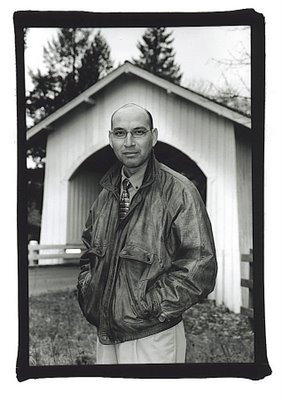The Vanishing Vertical?

Back in college I realized an experimental film making course quickly sealed my career path. You see, during a class editing session when it became painfully clear that my accidental vertically shot footage didn't qualify as art, all the professor could mutter was "still photographer". Since then I've never made another movie but I still continue to enjoy, and almost prefer, using my camera with a vertical orientation.
Now let's flash forward a couple of decades to the electronic age and a disturbing trend I've been noticing more of lately -- the proliferation of the horizontal image. Perhaps it's an adjustment forced by the computer monitor's landscape proportions where all digital photos are edited and viewed and verticals can't be seen full-screen without scrolling up and down. Maybe it's a sign of the times, reflecting the shift from printed newspapers to on-line versions where space is a premium. Maybe it's just compositional apathy or laziness. But whatever the reason, the days of big, deep vertical photographs seem to be disappearing.
Even I've fallen into this trap. After a recent flight to cover winter flooding in Portland, Oregon, I discovered the majority of my shots were horizontal. But I also determined that the verticals, though fewer, were much more dramatic. Looking back this makes perfect sense, considering horizontal lines are synonymous with tranquility while vertical lines exude strength.
The lesson learned here is simple: make the effort to turn your camera and look beyond the obvious -- the newspaper may be slowly vanishing but that doesn't mean the vertical photo has to fade away too!


2 Comments:
Yep, I think it has a lot to do with the horizontal format of the computer screen. And it will get even more pervasive as people buy new, wide screen TVs (and computer monitors). And you will see even more horizontals as photojournalists migrate to video and take frame grabs instead of having dedicated still cameras.
Vertical and horizontal images rather than 'portrait & landscape'. Actually setting the camera rather than using 'modes'.
Whenever I have taught workshops and/or classes I have asked the participants to check out the dimensions of the publications they read or look at most. Invariably they are surprised most are set up as Vertical publications. Most magazines use Vertical images for their covers even if they have to crop horizontals severely to get them that way.
I use what works best for any image but find myself using vertical framing much of the time.
Post a Comment
<< Home